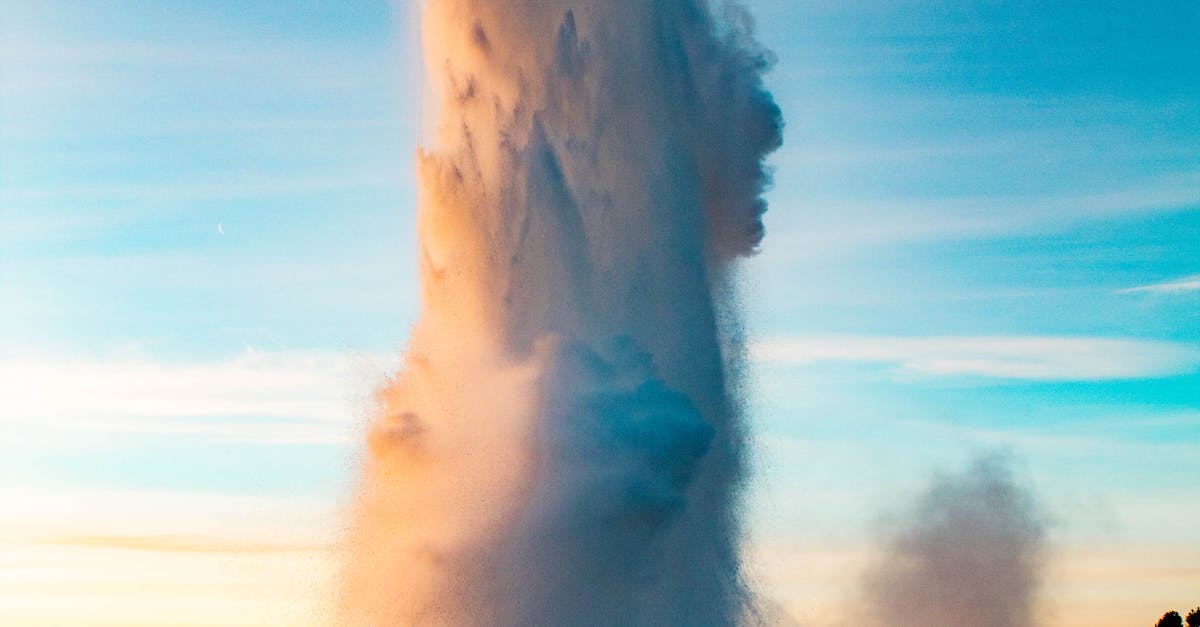
Table Of Contents
Understanding Early Warning Signs
Understanding early warning signs is crucial for effective hot water system leak detection. One common indicator to watch out for is a drop in water pressure in the system. If you notice a sudden decrease in water pressure without any apparent reason, it could signify a potential leak within the hot water system. Additionally, if you hear unexplained sounds such as hissing or dripping near the water heater, it could be a sign of a leak that needs prompt attention.
Another early warning sign of a hot water system leak is the presence of rust or corrosion on the pipes or fittings. Over time, corrosion can weaken the material and make it more prone to leaks. Therefore, conducting regular visual inspections of the hot water system components can help in identifying any signs of rust or corrosion early on, allowing for timely maintenance or repairs to prevent a major leak from occurring.
Noticing Water Stains or Mold Growth
Noticing water stains or mold growth in areas prone to hot water system leakages is crucial for early detection and prevention measures. Water stains on walls, ceilings, or floors may indicate a slow but continuous leak within the piping system. These stains can vary in appearance from slight discoloration to more prominent blotches, serving as visible indicators of potential issues within the hot water system. Similarly, the presence of mold or mildew growth in damp or humid areas can suggest a persistent water leak that requires immediate attention to avoid further damage. By promptly recognizing and addressing such signs, property owners can mitigate the risk of extensive damage and costly repairs associated with undetected leaks in their hot water systems.
Exploring Advanced Detection Options
Exploring advanced detection options for hot water system leak detection can involve utilizing cutting-edge technology to pinpoint issues before they escalate. One such option is the use of thermal imaging cameras, which can detect temperature differentials indicative of leaks within the system. These cameras offer a non-invasive method of identifying hidden problems that may not be visible to the naked eye, allowing for swift intervention to prevent costly damages.
In addition to thermal imaging cameras, other advanced detection options include acoustic leak detection systems that can detect the sound of water escaping from pipes. By employing these innovative tools, facilities can enhance their leak detection capabilities and minimize the risk of water damage. Investing in advanced detection options not only improves the efficiency of hot water system leak detection but also demonstrates a commitment to proactive maintenance practices that can ultimately save time and money in the long run.
Using Thermal Imaging Cameras
Thermal imaging cameras prove to be valuable tools in the realm of hot water system leak detection. By detecting heat patterns invisible to the naked eye, these cameras offer a non-invasive method for pinpointing potential leak sources. The ability of thermal imaging cameras to identify temperature variations in the system can help in swiftly uncovering hidden leaks before they evolve into larger, more costly issues.
When utilizing thermal imaging cameras for hot water system leak detection, it is essential to ensure that operators receive proper training on the equipment. Understanding how to interpret the thermal images accurately is crucial for identifying leaks promptly and effectively. By incorporating thermal imaging cameras into the leak detection process, maintenance teams can enhance the efficiency and precision of their leak detection efforts in hot water systems.
Training Staff on Leak Response
Training staff on leak response is a critical component of ensuring the efficient management of hot water system leak detection. Educating employees on how to promptly identify and address leaks can help prevent extensive damage and minimize downtime. Staff members should be familiar with the early warning signs of a leak and understand the importance of reporting any unusual observations promptly. Providing comprehensive training sessions and practical demonstrations can enhance their ability to respond effectively to potential leaks in the hot water system.
Creating clear and concise emergency protocols is essential in preparing staff members for efficient leak response in the context of hot water system leak detection. Staff should be aware of their roles and responsibilities in the event of a leak and understand the steps to take to mitigate the situation. Regular drills and simulation exercises can help reinforce proper procedures and ensure that employees are well-prepared to handle leaks effectively. By investing in training and establishing thorough emergency protocols, organizations can enhance their overall preparedness for dealing with hot water system leaks.
Creating Emergency Protocols
Creating emergency protocols for Hot Water System Leak Detection is crucial for minimizing damage and ensuring swift response. Staff must be trained on how to react in case of a leak, including immediate steps to take and who to contact for assistance. Establishing clear communication channels and a chain of command during such incidents is essential for a swift and efficient response.
In addition to staff training, it is important to have designated emergency response procedures in place. These protocols should outline steps for shutting off the hot water system, containing the leak if possible, and ensuring the safety of all occupants. Regular drills and reviews of these emergency protocols can help ensure that staff are prepared and confident in their ability to respond effectively to potential leaks in the Hot Water System.
FAQS
What are some early warning signs of a hot water system leak?
Early warning signs of a hot water system leak include water stains, mold growth, musty odors, increased water bills, and the sound of running water when no fixtures are in use.
How can thermal imaging cameras help in detecting hot water system leaks?
Thermal imaging cameras can help detect hot water system leaks by capturing infrared images that show temperature variations, allowing technicians to pinpoint the source of the leak even if it's hidden behind walls or ceilings.
Why is it important to train staff on leak response for hot water systems?
Training staff on leak response for hot water systems is important to ensure that leaks are detected and addressed quickly, minimizing damage and potential downtime. Staff should be able to recognize signs of a leak, know how to shut off the water supply, and follow emergency protocols.
What are some advanced detection options for hot water system leaks?
Advanced detection options for hot water system leaks include acoustic leak detection devices, moisture meters, and water flow sensors. These tools can help detect leaks early and prevent extensive damage to the property.
How can creating emergency protocols help in managing hot water system leaks?
Creating emergency protocols for hot water system leaks can help streamline the response process, minimize damage, and ensure the safety of occupants. Protocols should include steps for identifying leaks, shutting off water supply, contacting maintenance personnel, and documenting the incident for future reference.












































